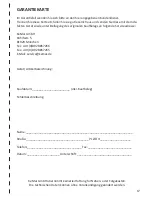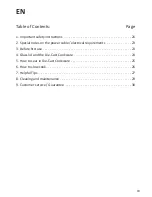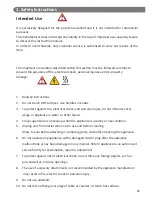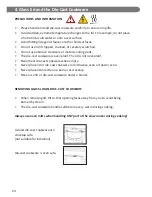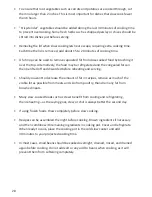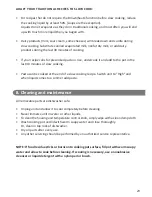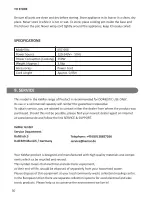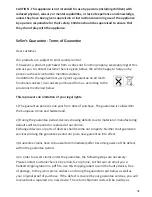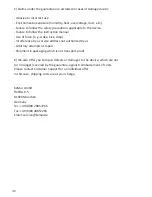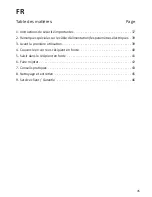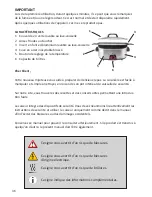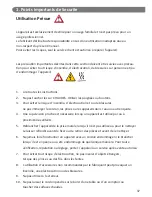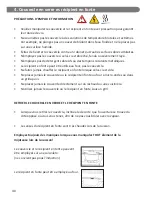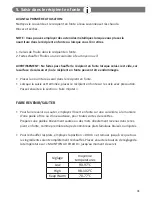
6
6. How to slow cook
WARNING: Food Safety Hazard
Food must be hot enough to prevent bacterial growth before using ”WARM” setting.
The ”WARM” setting should only be used after a recipe has been thoroughly cooked.
Do not reheat food on ”WARM” setting. If food has been cooked and then refrigerated,
reheat it on ”LOW” or ”HIGH” setting and then switch to ”WARM”.
BEFORE FIRST USE: Wash lid and die-cast cookware in hot, soapy water. Rinse and dry.
NOTE: You may use metal utensils when placing food in and removing food from die-cast
cookware.
1. Add food to die-cast cookware.
2. Place lid on the die-cast cookware.
NOTE: Lid vent hole will not affect cooking time.
3. Insert the plug into the wall outlet.
4. Turn the temperature control knob to desired heat setting to cook.
Do not cook on the ”WARM” setting
Slow cooking is perfect for foods that require long, slow simmering, such as soups, stocks,
stews, and dried beans. Slow cooking is also ideal for tougher and less expensive cuts of
meat like shoulder and pot roast.
The ”LOW” setting is usually used for recipes that cook longer.
When starting a dish later in the day, select the ”HIGH” setting to ensure that food is cooked.
Select ”WARM” when the food is fully cooked.
To reheat foods, use the ”LOW” setting and stir until all ingredients are warmed through.
Then switch to ”WARM” setting on the temperature knob until ready to serve.






